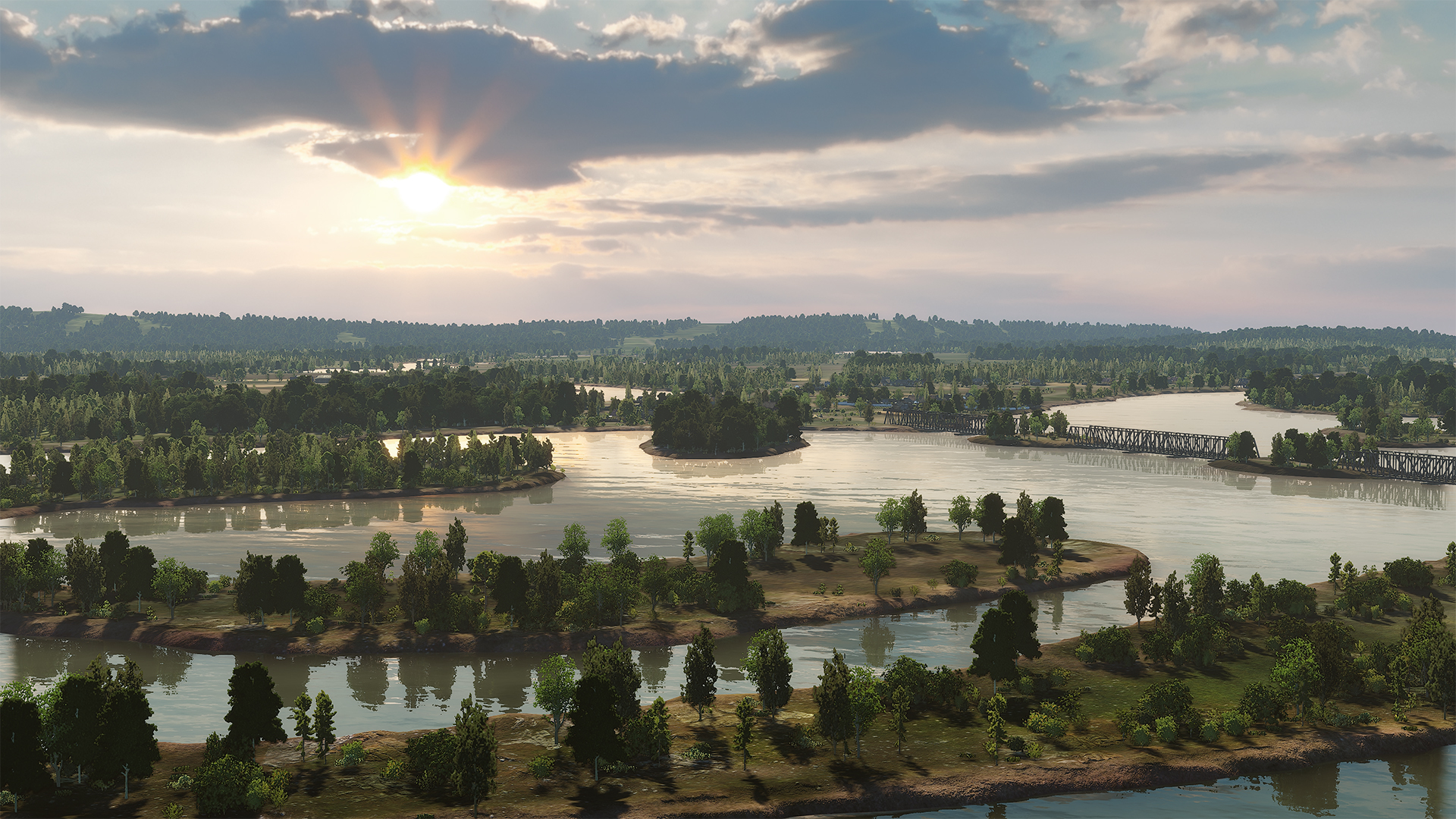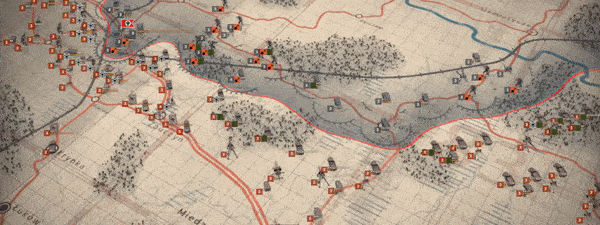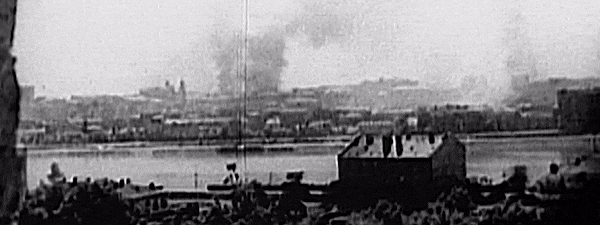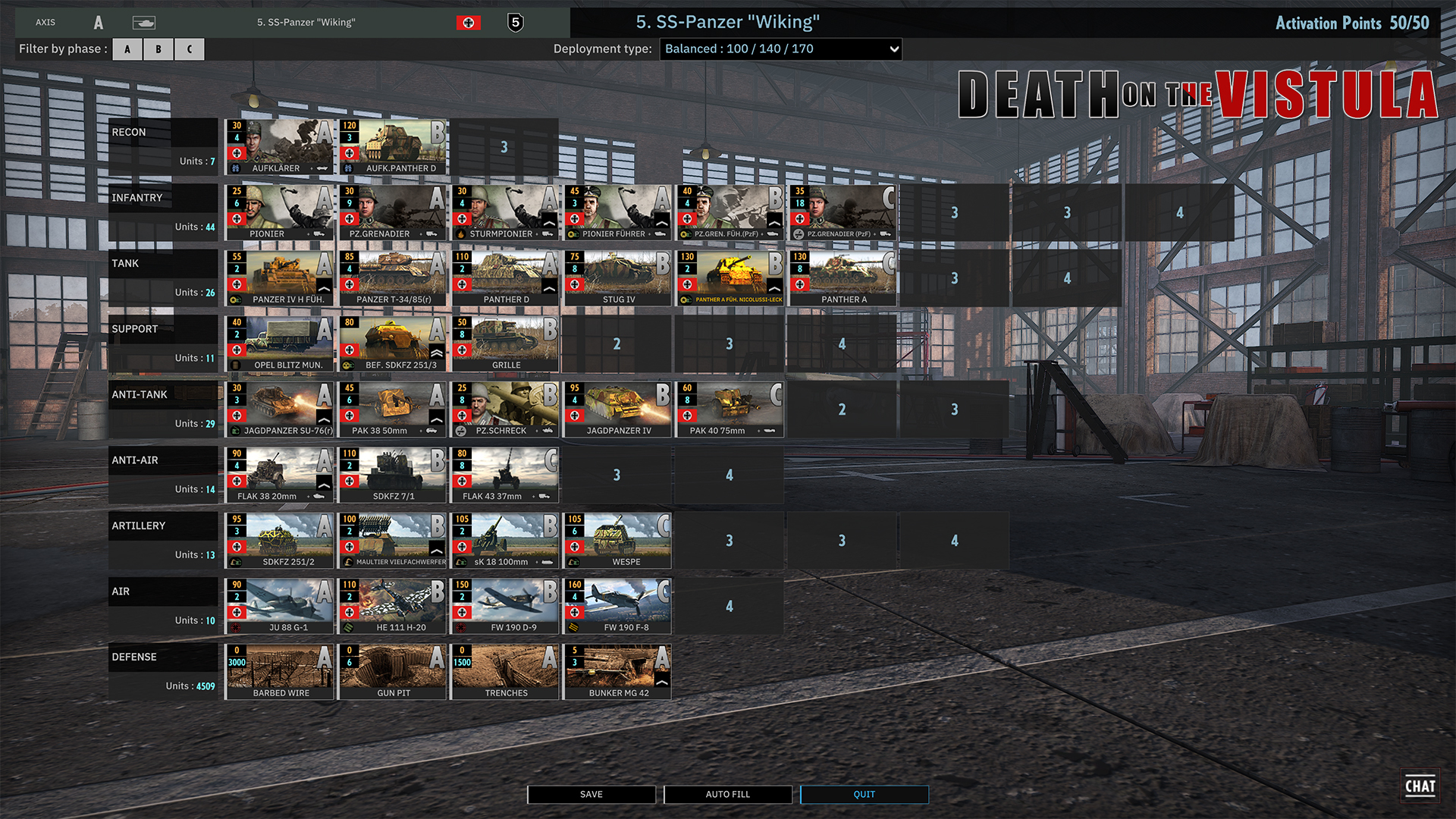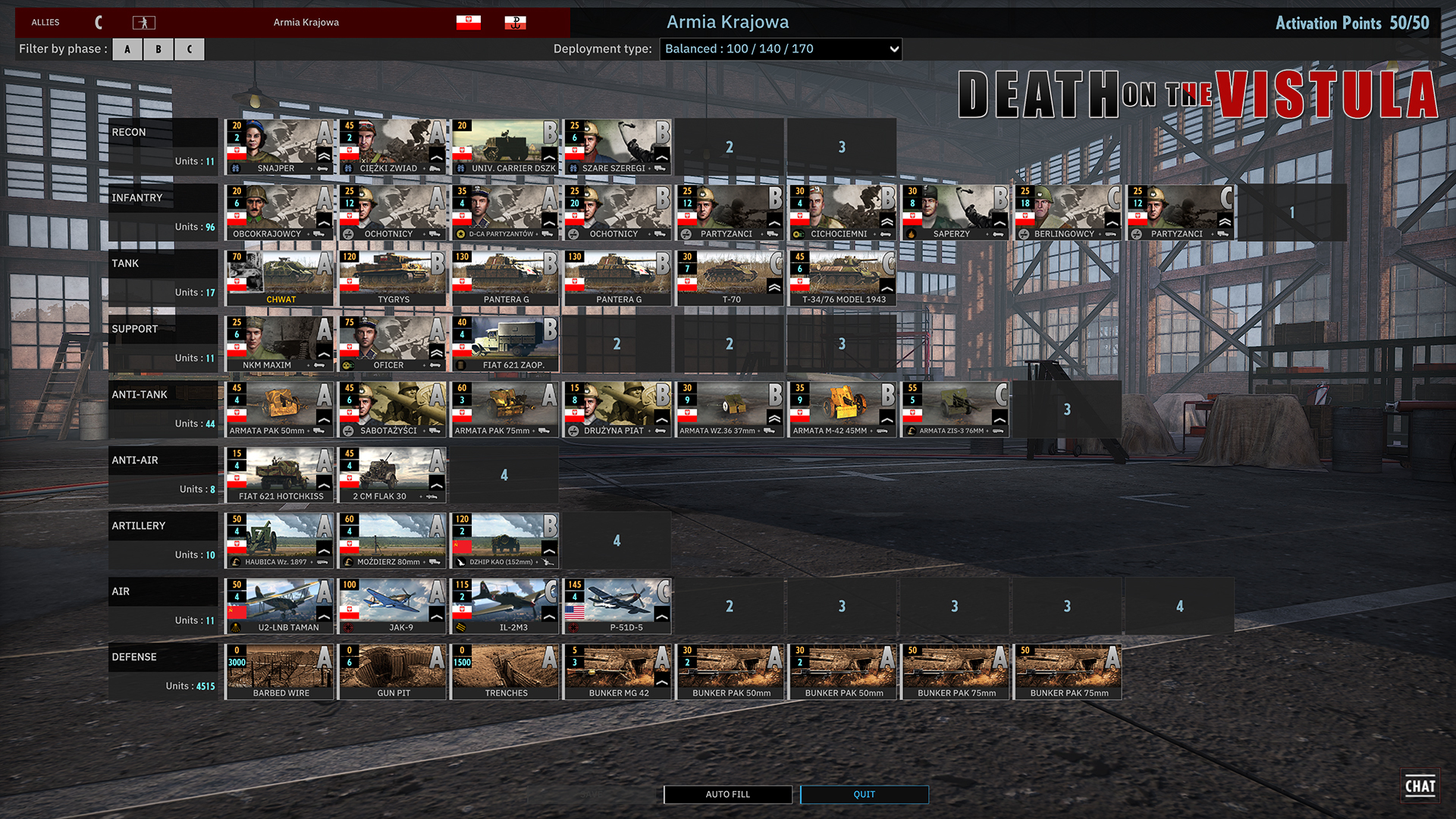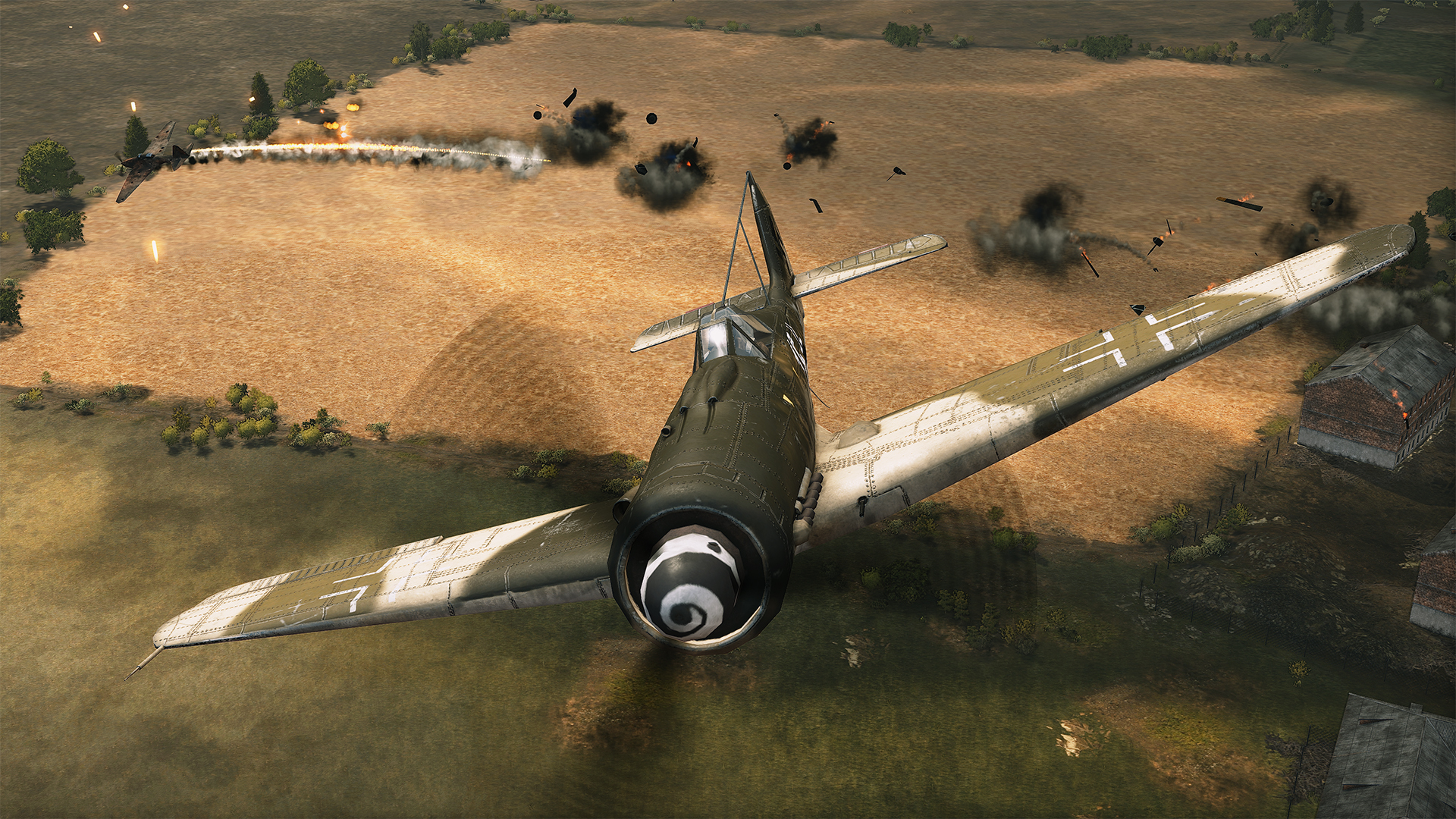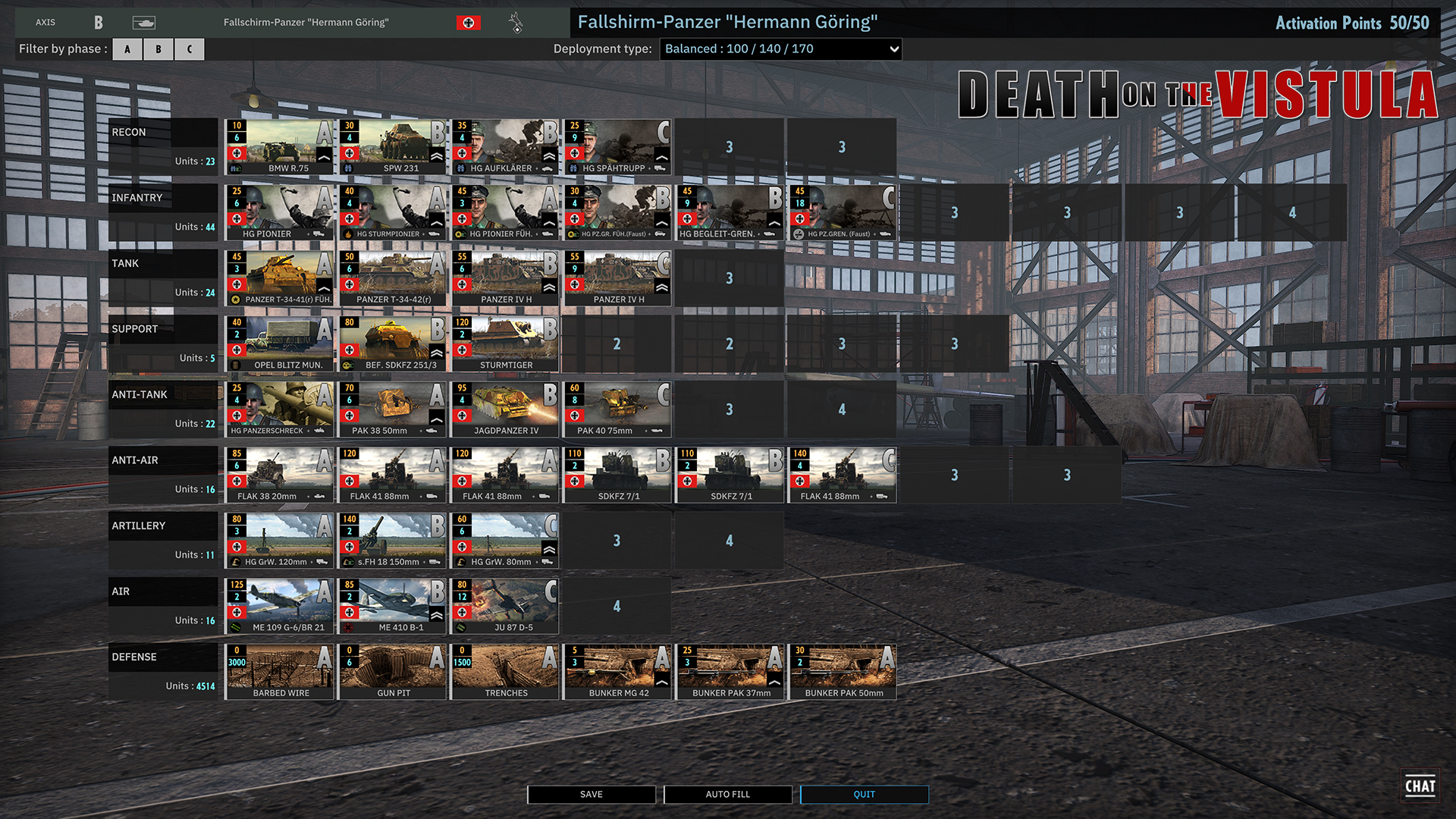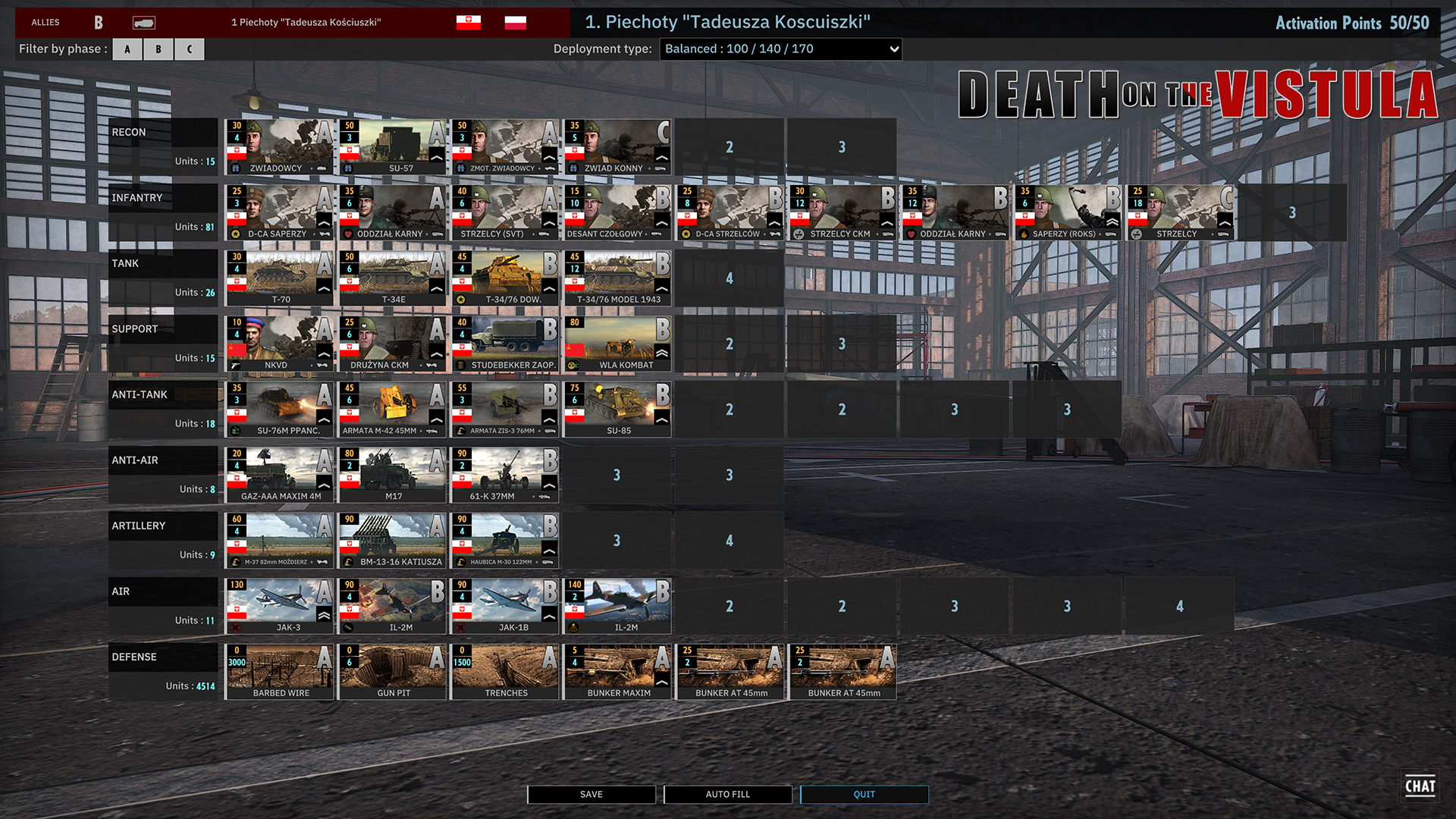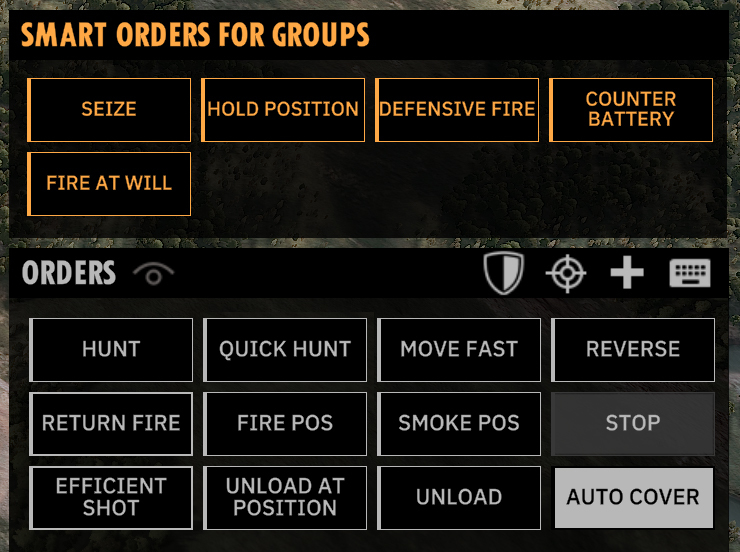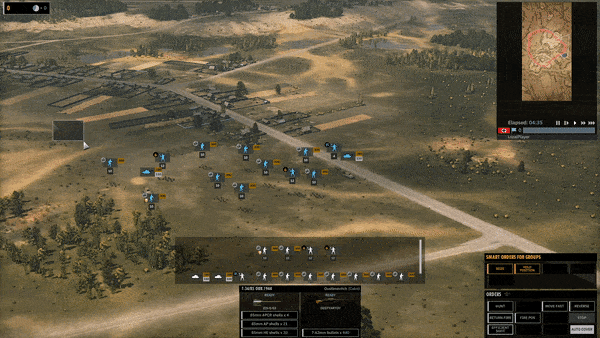Steel Division 2 - Death on the Vistula Aces Detailed and New Units Highlighted
Hello commander!
So exciting! The release of our very-first Steel Division 2 History DLC, Death on the Vistula, is just around the corner. This coming Thursday, October 17th, you can get your hands on four new divisions, a gigantic new Army General campaign, four new Historical Battles, two new Aces, and over 200 new units. If you haven’t, get the Death on the Vistula DLC now!
https://store.steampowered.com/app/988171/Steel_Division_2__History_Pass/
As part of this DLC, together with the new units, we’ll also be releasing two new Aces. In today’s article, we’ll take a closer look at these historical figures (and vehicles).
Karl Nicolussi-Leck
The new Axis Ace is the tank commander Karl Nicolussi-Leck with his Panther A. He managed to single-handedly break through an enemy encirclement during the battle of Kovel as part of the 5. SS-Panzerdivision “Wiking”. Disregarding a direct order to withdraw, Nicolussi-Leck kept up the attack, destroying several Soviet tanks, and ultimately reached the besieged troops. The trapped forces escaped with most of their heavy equipment intact, which later earned Nicolussi-Leck the Knight's Cross of the Iron Cross for his actions.

The “Chwat” Jagdpanzer 38(t)
The Allied Ace is not a person but a tank! The “Chwat”, which means “Daredevil” in Polish, was a Jagdpanzer 38(t) Hetzer tank captured by the Armia Krajowa - the Home Army - during the opening days of the Warsaw Uprising. After some hasty repairs, they used the diminutive tank destroyer against the German forces in the ensuing street battles. It did not survive the war - save for a discarded road wheel - but proved its value for the brief time it served the brave fighting Poles.
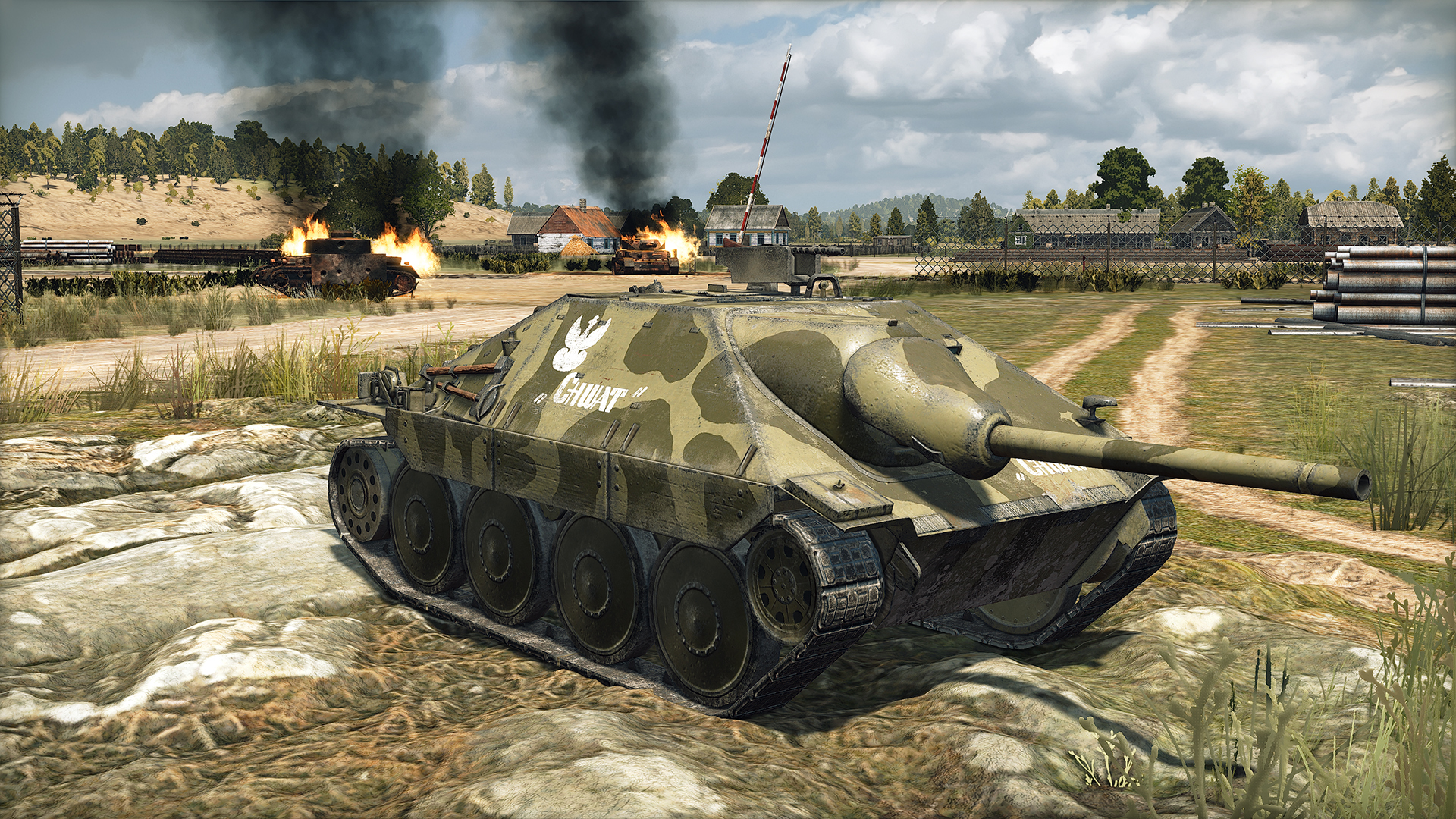
Sturmtiger
The mighty Sturmtiger, a beast of a machine firing 380mm rocket-propelled rounds, was a rare heavy assault gun designed to provide offensive fire support in built-up areas. Only during the Warsaw Uprising was this vehicle actual employed as intended, when a handful of Sturmtiger, including the original prototype, attacked urban fortifications. The Sturmtiger can be found with the new Fallschirm-Panzerdivision “Hermann Göring”.

Bergepanther
The Bergepanther, an armored recovery vehicle based on the Panther medium tank, was used to retrieve disabled tanks on the battlefield. As the war progressed, the German High Command realized they needed a new vehicle powerful enough to recover the heavy tanks (Tiger, Panther, etc.) still salvageable after a battle. Lacking a turret, the box-topped Bergepanther was equipped with a winch and cable system and had only limited defensive armaments. The Bergepanther can be deployed as a heavy prime mover with the new 5. SS-Panzerdivision “Wiking”.
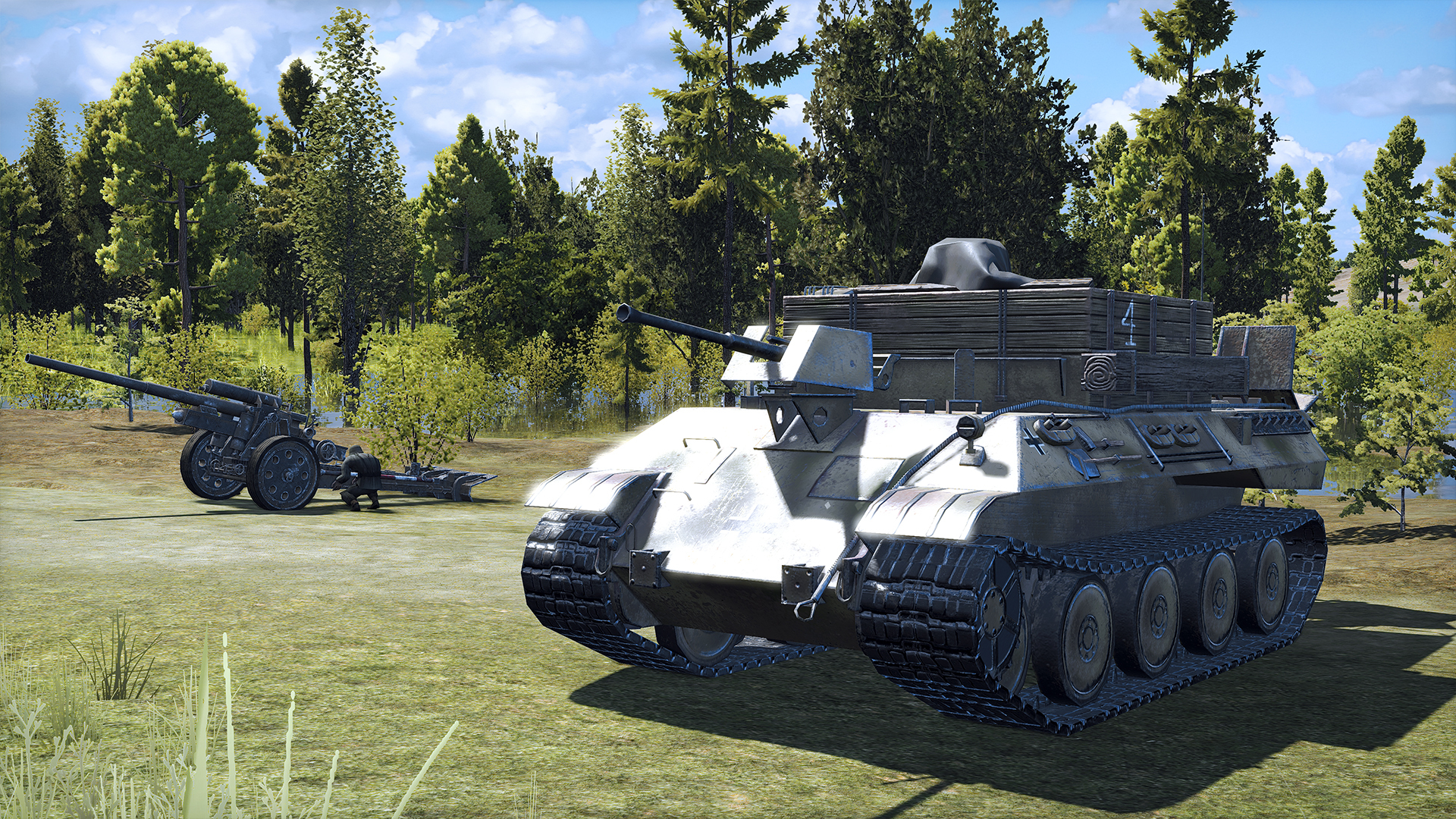
Fw 190 D-9 "Long Nose"
One of the many variants of the successful Focke-Wulf 190, the “Long Nose” D-9 single-seat fighter was originally designed for attacking high-flying Allied heavy bombers. The realities of the war forced the Luftwaffe to use the D-9, nicknamed “Dora”, as an anti-fighter and in ground-attack missions instead. The capable Fw 190 D-9 Dora is featured with the 5. SS-Panzerdivision “Wiking”.

JU 88 G1
The venerable twin-engined Junkers Ju 88 was used by the Luftwaffe from the very beginning of World War 2. This multi-role combat aircraft saw many uses: as a dive bomber, a photo-reconnaissance plane, a night fighter, in a ground-attack role. The JU 88 G1 took on the mantle as a capable heavy fighter, being able to bring a large amount of firepower to bear. The JU 88 G1 is featured with the Fallschirm-Panzerdivision “Hermann Göring”.

Kubus
The scratch-built Kubus was an armored personnel carrier made by the Armia Krajowa during the Warsaw Uprising. A truly unique vehicle (only one was ever made), the improvised Kubus carried a machine-gun and flamethrower spearheaded several assaults. The original armored car survived the war and is now on display. In Steel Division 2, a small number of Kubus fighting vehicles can be found as part of the Armia Krajowa division.

Captured Panthers
During the Warsaw Uprising, the Home Army managed to capture a handful of German vehicles. Among these, two Panther A medium tanks were recovered almost completely intact. They were quickly used with devastating effect against their original owners. The Panther is not the only captured tank that can be deployed by the Armia Krowjawa: they also have access to the Jagdpanzer 38(t), Panzer IV, Tiger, and even an Italian M14/41.
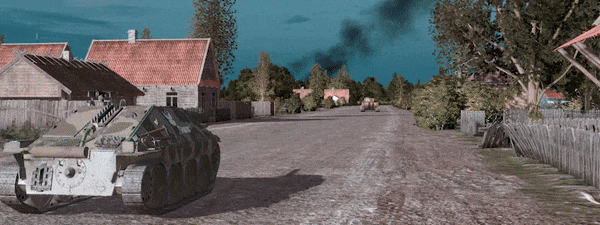
Get ready!
This Thursday, October 17th, we won’t only be releasing the Death on the Vistula DLC but also a number of Reinforcement Packs, which will be available for free to all our Steel Division 2 players. These packs will bring three new maps (read more about them here), the new Smart Orders (read about this new feature here), two new soundtracks, and new in-depth tutorials for the Army General and the tactical game.
https://store.steampowered.com/app/988171/Steel_Division_2__History_Pass/
You can always check out our Steam and Eugen forums and social channels (Facebook and Twitter).
See you on the battlefield, commander!
So exciting! The release of our very-first Steel Division 2 History DLC, Death on the Vistula, is just around the corner. This coming Thursday, October 17th, you can get your hands on four new divisions, a gigantic new Army General campaign, four new Historical Battles, two new Aces, and over 200 new units. If you haven’t, get the Death on the Vistula DLC now!
https://store.steampowered.com/app/988171/Steel_Division_2__History_Pass/
As part of this DLC, together with the new units, we’ll also be releasing two new Aces. In today’s article, we’ll take a closer look at these historical figures (and vehicles).
New Aces
In case you forgot: Aces are unique units that don’t feature any kind of gameplay or statistical advantage. They look badass, but play exactly the same! Karl Nicolussi-Leck
The new Axis Ace is the tank commander Karl Nicolussi-Leck with his Panther A. He managed to single-handedly break through an enemy encirclement during the battle of Kovel as part of the 5. SS-Panzerdivision “Wiking”. Disregarding a direct order to withdraw, Nicolussi-Leck kept up the attack, destroying several Soviet tanks, and ultimately reached the besieged troops. The trapped forces escaped with most of their heavy equipment intact, which later earned Nicolussi-Leck the Knight's Cross of the Iron Cross for his actions.

The “Chwat” Jagdpanzer 38(t)
The Allied Ace is not a person but a tank! The “Chwat”, which means “Daredevil” in Polish, was a Jagdpanzer 38(t) Hetzer tank captured by the Armia Krajowa - the Home Army - during the opening days of the Warsaw Uprising. After some hasty repairs, they used the diminutive tank destroyer against the German forces in the ensuing street battles. It did not survive the war - save for a discarded road wheel - but proved its value for the brief time it served the brave fighting Poles.

Over 200 new units
The Death on the Vistula DLC will also bring over 200 new units. We want to highlight several of the more unique vehicles you’ll be able to command. Sturmtiger
The mighty Sturmtiger, a beast of a machine firing 380mm rocket-propelled rounds, was a rare heavy assault gun designed to provide offensive fire support in built-up areas. Only during the Warsaw Uprising was this vehicle actual employed as intended, when a handful of Sturmtiger, including the original prototype, attacked urban fortifications. The Sturmtiger can be found with the new Fallschirm-Panzerdivision “Hermann Göring”.

Bergepanther
The Bergepanther, an armored recovery vehicle based on the Panther medium tank, was used to retrieve disabled tanks on the battlefield. As the war progressed, the German High Command realized they needed a new vehicle powerful enough to recover the heavy tanks (Tiger, Panther, etc.) still salvageable after a battle. Lacking a turret, the box-topped Bergepanther was equipped with a winch and cable system and had only limited defensive armaments. The Bergepanther can be deployed as a heavy prime mover with the new 5. SS-Panzerdivision “Wiking”.

Fw 190 D-9 "Long Nose"
One of the many variants of the successful Focke-Wulf 190, the “Long Nose” D-9 single-seat fighter was originally designed for attacking high-flying Allied heavy bombers. The realities of the war forced the Luftwaffe to use the D-9, nicknamed “Dora”, as an anti-fighter and in ground-attack missions instead. The capable Fw 190 D-9 Dora is featured with the 5. SS-Panzerdivision “Wiking”.

JU 88 G1
The venerable twin-engined Junkers Ju 88 was used by the Luftwaffe from the very beginning of World War 2. This multi-role combat aircraft saw many uses: as a dive bomber, a photo-reconnaissance plane, a night fighter, in a ground-attack role. The JU 88 G1 took on the mantle as a capable heavy fighter, being able to bring a large amount of firepower to bear. The JU 88 G1 is featured with the Fallschirm-Panzerdivision “Hermann Göring”.

Kubus
The scratch-built Kubus was an armored personnel carrier made by the Armia Krajowa during the Warsaw Uprising. A truly unique vehicle (only one was ever made), the improvised Kubus carried a machine-gun and flamethrower spearheaded several assaults. The original armored car survived the war and is now on display. In Steel Division 2, a small number of Kubus fighting vehicles can be found as part of the Armia Krajowa division.

Captured Panthers
During the Warsaw Uprising, the Home Army managed to capture a handful of German vehicles. Among these, two Panther A medium tanks were recovered almost completely intact. They were quickly used with devastating effect against their original owners. The Panther is not the only captured tank that can be deployed by the Armia Krowjawa: they also have access to the Jagdpanzer 38(t), Panzer IV, Tiger, and even an Italian M14/41.

Get ready!
This Thursday, October 17th, we won’t only be releasing the Death on the Vistula DLC but also a number of Reinforcement Packs, which will be available for free to all our Steel Division 2 players. These packs will bring three new maps (read more about them here), the new Smart Orders (read about this new feature here), two new soundtracks, and new in-depth tutorials for the Army General and the tactical game.
https://store.steampowered.com/app/988171/Steel_Division_2__History_Pass/
You can always check out our Steam and Eugen forums and social channels (Facebook and Twitter).
See you on the battlefield, commander!
